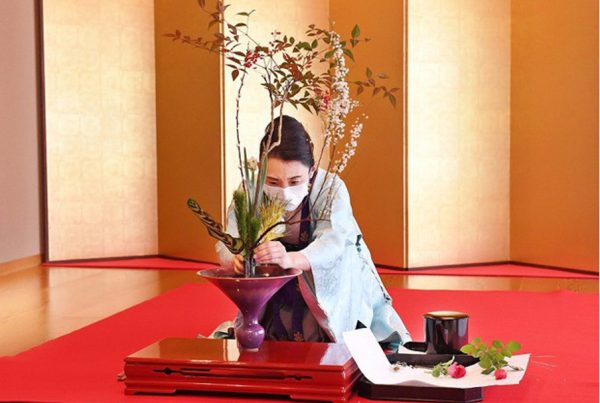Anyone who has travelled some distances knows that people from different countries communicate in different ways. The greater the distance between departure and arrival, the more obvious the truth. Knowing the unspoken rules governing the social life of a certain culture helps one adapt himself faster, avoid misinterpretations and build mutual respect when approaching others.
In high-context cultures, most information is either in the physical context or internalised in the person, while very little is in the coded, explicit, or transmitted part of the message.
Edward Hall
The concepts of high and low context were introduced by anthropologist Edward T. Hall in his book The Silent Language, to describe the basic differences in societies when it came to communication and cultural matters.
Cultures and communication in which the context is of high importance to one’s actions are referred to as “high context”. In high-context countries communication is indirect and messages are subtle, therefore situational awareness is of great significance. These cultures value active listening, give meaning to one’s body language, discreet expressions or changes in the pitch of someone’s voice.
In low context cultures, most information is expected to be in the transmitted message in order to make up for what is missing in the context (both internal and external).
Edward Hall
Low context cultures won’t necessarily consider one’s background, which means the communication relies mostly on verbal skills. Messages are explicit and the communication is abundant because it doesn’t build on subtle, non verbal cues.
Geert Hofstede, a Dutch psychologist and researcher in cross-cultural groups, ads another dimension to high and low context cultures, that of collectivism vs. individualism.
High context cultures are usually collectivist societies that prioritise the well-being of the group over the individual. They value long lasting interpersonal relationships where people rely on their networks of friends and family and consider themselves as part of one large community.
Low context cultures favour small groups’ personal interests, promoting individualism and competition. The social interaction is by far looser and its dynamics often changes the size and boundaries of a group.

Japan, China, Korea, Vietnam, or the Arabic countries have a predominantly high-context culture. Scandinavian and Germanic countries or the United States (except Native Americans and Hawaii islanders) have more of a low-context culture, while Italy, England or France are somewhere in between.
For a period of 214 years Japan was a Sakoku (鎖国), literally translated as “closed country”.
In the case of Japan, it might be the ancient-old group work in rice farming, or the long history of isolationism under the Tokugawa Shogunate (1639 – 1853) that contributed to a culture of public good. Even the geographical context and the densely populated areas might have influenced the Japanese collective way of thinking.
There are pros and cons on both sides of the spectrum. In the case of collectivist countries, the avoidance of free expression or disagreement with someone considered an authority might sometimes repress individual creativity and promote a culture that favours those obeying the rules. Individualist societies, on the other hand, value personal independence and uniqueness.
The most important thing in communication is hearing what isn’t said.
Peter F. Drucker
However long you might stay in Japan, you may not come across the word “no”. It happens not because the word does not exist in the Japanese vocabulary, but because refusing is considered rude. Refusing someone is being considered rude. That’s why “no” is often replaced by “maybe” or “there might be a possibility”. This particular custom of politely saying “no” joins every facet of Japanese life.
The literal meaning of “kūki o yomu” is “reading air” and is the Japanese equivalent to the better known Western phrase “to read between the lines”. This skill is considered an attribute of social intelligence in most Eastern countries and a manner everyone should master.
Social protocols in Japan emphasise indirect communication and situational awareness. Sensing the air around and rely on contextual cues come very natural in any Japanese interaction. People here excel in sensing someone else’s feelings and adapt their behaviour accordingly. They feel comfortably with long silences, engage politely in a conversation and wait until other persons have finished talking.
The communication style of today’s Japan has deep roots in the old Japanese language.
Nihongo (日本語) is classified as an agglutinated language, meaning it attaches different elements called “affixes” to the words, in the form of particles, auxiliary verbs or auxiliary adjectives. These elements contribute to a specific grammatical structure but, besides this, they indicate someone’s personal feelings and point to different levels of politeness.
For example, “Kisha no kisha ga kisha de kisha shimashita” translates as “A reporter of your company returned to the office by train”. In written language it is easier to detect the meanings of the same word by using different kanji symbols, but things might get tricky when speaking.
The Japanese language has also a few number of “moras” (meaning units of sound determining syllable weight) and this results in a large amount of homonyms. According to a research, 35% of the Japanese words belong to a certain group of homonyms. This is why Japanese conversations are often difficult to understand without knowing the context.
An important part in reading the air is to be able to pick-up non verbal cues and perceive micro-expressions.
Psychologist Paul Ekman, whose research inspired the award-winning television series “Lie to Me”, describes micro-expressions as being those discreet involuntary facial grimaces, lasting as long as half of a second and giving away someone’s true feelings and emotions. Micro-expressions indicating anger, disgust, fear, happiness, sadness, and surprise were found to be valid, regardless of the culture. Reading them becomes extremely important when engaging in highly non-verbal communication.
But deciphering the body language is just a part of the complexity behind reading the air. There is another key layer in Japanese communication: the social etiquette.
The words Honne (本音) and Tatemae (建前) refer to someone’s private and public attitudes.
In traditional Japanese culture, public failure and disapproval of others are often perceived as sources of shame or signs of low social standing. Social norms dictate that one should minimise conflict, whenever possible. That’s why direct confrontation or disagreement is usually avoided in social contexts.
After the World War II, Japanese started to use specific words to describe the attitude someone takes in certain moments: Honne (本音) – meaning one’s true thoughts, feelings and desires – and Tatemae (建前), that refers to the behaviours and opinions displayed in public, or expected by the society.
When Honne is misaligned with Tatemae, internal conflicts arise and they have generated many types of social drama far and wide the Japanese history. In extreme cases, the misalignment contributes to a condition called hikikomori or “acute social withdrawal”. Hikikomori have been described as loners or social recluses. An article published in “The Mainichi” states that around 600.000 Japanese between 40 and 64 have become socially isolated in 2019. The main reasons appear to be the inability to find a job, power harassment or long working hours in case of some former employees.
There is a certain humbleness and decency specific to Japanese people. Displaying different attitudes based on a specific context is not an exclusive Japanese phenomena, although it’s something entrenched in the society. Even if not every nation used specific words to describe the state of things, we might say almost every culture has its own conventions in business, public and private life.
If failing the socially unspoken, you might be named a “KY”, – a Japanese slang meaning “kūki ga yomenai”, or “unable to read the air”
Finally, there is the context around a situation one needs to take notice of, especially in high-context countries as Japan.
Let’s say you’re in a restaurant, having dinner with your spouse and two kids. If the lady sitting at the table next to you tells you that your kids seem “very healthy” running around, would you take it as a compliment?
Or… if in a business meeting with Japanese persons you are complimented on the watch you are wearing, does it mean you should give them details about your accessory?
Well, in the first case, you were politely informed that your kids were disturbing and immediate parental action was needed. In the second scenario, the Japanese didn’t expect extra details but wanted you to take a look at your wrist and realise it’s time to wrap-up the meeting.
The city of Kyoto is well known for its hiniku (皮肉) – the Japanese equivalent of sarcasm.
In Japan’s old capital, the way of addressing is even more elevated. For example, you might hear people in Kyoto saying “Zehi o-asobi ni kite kudasai!”, meaning “You definitely have to visit us!” But that doesn’t necessarily mean that they do expect you to pay them a visit in the near future. To check for an honest invitation you might ask the person to recommend a hotel nearby. If they do that, the truth between the lines is pretty obvious.
Some other subtle forms of sarcasm that tell one thing but mean another start with the five syllables “sa, shi, su, se, so”:
- sasuga (さすが) meaning “well done”, it is often said when no actual hard work was put into something.
- shiranakatta (知らなかった) or “I didn’t know that” might be used when somebody talks about an obvious fact.
- sugoi (すごい) is “awesome”, but sometimes it is said in the most boring moments.
- sensu ii ne (センスいいね) is a sarcastic form of complimenting someone’s non existent good looks or knowledge.
- sou nan da (そうなんだ) or “really?” – a rhetorical question used in situations when one wants to laugh at another person.
So, can one learn how to read the air?

The good news is that the skill can be cultivated. When learning to “read the air”, as in many other aspects of life, practice might be the key. And such practice starts with a few elementary things such as be respectful, try to put yourself in someone else’s shoes, do not jump into conclusions and listen. Really listen. Some basic cultural knowledge would also help when trying to interpret small gestures. And, of course, the language. The richer the vocabulary, the better.
An efficient approach when trying to integrate into a high-context culture is trying to match the dynamics of a group. From a psychological point of view it is a persuasion technique as it sends subconscious signals you are in the same mindset as the people around you. If everybody is silent, try to keep it the same – an obvious scenario in Japanese trains. If everybody is relaxed and cheerful, contribute to that. The goal is “gambarimasu”, meaning “try to do your best” to read the unspoken, in order to maintain social harmony.
One might say that reading the air just makes things complicated. But there are certain advantages to this. For example, it limits problems from arising in the first place. It also encourages people to take time and reflect before speaking their minds. And it requires one’s full attention every moment, pushing one to stay connected to people and situations around in a more meaningful way.
Generally, open-minded and sensitive people will find it fairly easy to decipher the in-articulated messages of the locals in high-context cultures. For others, the nuances might be a bit of an effort, especially in the beginning. But one should give it some time. Reading an atmosphere is a process based on accumulated experiences.
Paying attention to the variety of signals sent by the people around you is a useful practice in any social context, whether we refer to business or private life. “Reading the air” is a universal skill that will make your experience richer, especially in that high-context country you are planning to visit next.










